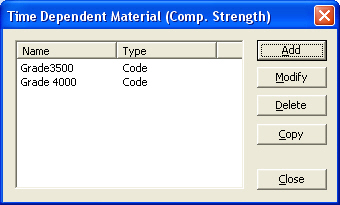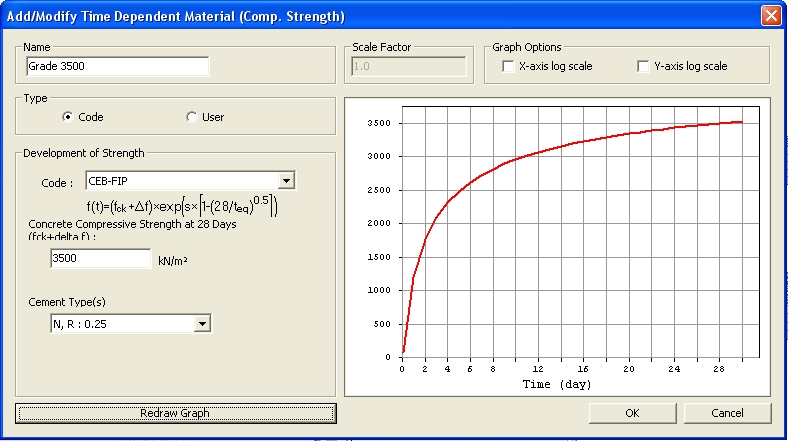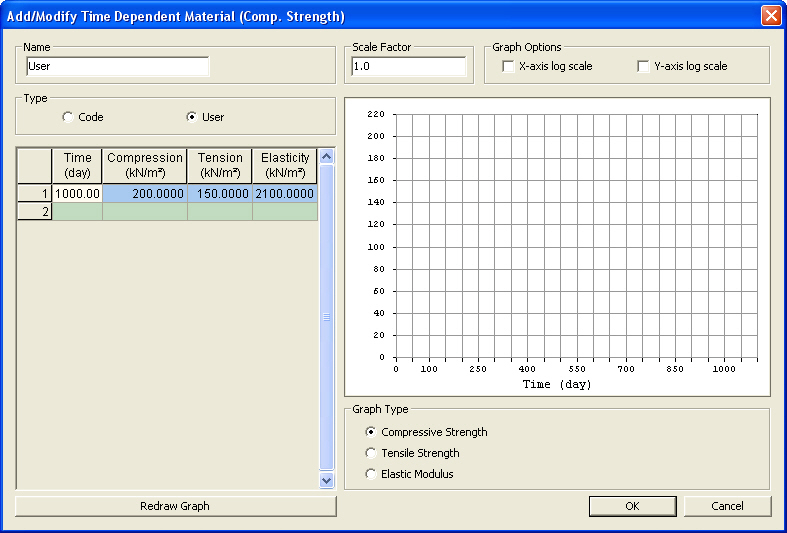Time Dependent Material (Comp. Strength)
|
|
|
|
|
|
Define Compressive Strength of concrete or the change of modulus of elasticity to reflect the variation of modulus of elasticity with time.
The concrete age of each member is measured from the time the concrete is cast, and each member will have an appropriate compressive strength and modulus of elasticity at each construction stage.
If concrete is poured into different parts of a composite section in stages, the difference in compressive strength and modulus of elasticity of each part, due to the difference in concrete age of each part, can be considered.
To reflect the change in compressive strength of concrete or the change in modulus of elasticity, 'Variation of Comp. Strength' option should be checked in Construction Stage Analysis Control Data. |
|
|
|
|
|
|
|
From the Main Menu select Model > Properties > Time Dependent Material (Comp. Strength).
Select Geometry > Properties > Time Dependent Material (Comp. Strength) in the Menu tab of the Tree Menu.
Click |
|
|
|
|
|
|
|
|
 Time Dependent Material (Comp. Strength)
Time Dependent Material (Comp. Strength)
 to define a new time
variant modulus of elasticity (Comp. strength). Click
to define a new time
variant modulus of elasticity (Comp. strength). Click  and
and
 to change and delete the data previously entered. Click
to change and delete the data previously entered. Click
 to copy previously entered data.
to copy previously entered data.
 (in MPa)
(in MPa) : Density of concrete, kg/m3
: Density of concrete, kg/m3 : Compressive strength of concrete, MPa
: Compressive strength of concrete, MPa
 :
: